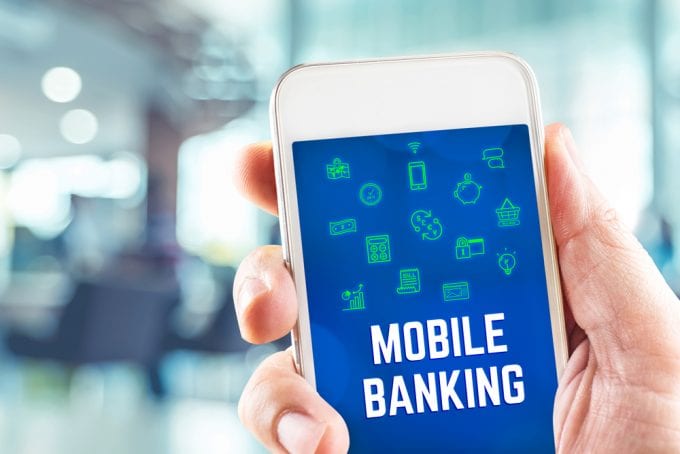Digital, Mobile, or Neo Banking are banking services that are delivered over the internet rather than conventional banking, which is usually delivered via a branch. A pure digital bank usually has no offices or physical locations you can visit; everything is done virtually via a mobile app or web-based application.
As banking has become more and more reliant on computers, APIs, and process automation, banking services can be delivered to the consumer in-app or web form at a cheaper price point.
Consumers benefit from the more affordable banking offerings and also the convenience which they bring. Customers still withdrawal or deposit money into ATMs as they wish, and if they need to contact a person, they can via their mobile bank’s application.
What is the difference between a Digital Bank and a conventional bank?

A conventional bank offers all the services you might be familiar with:- such as Personal Accounts, Business Accounts, Interest Bearing Saving Accounts, Mortgages, Personal Loans, Credit Cards, Insurance, etc. By contrast, these neo banks usually do not offer the same range of features. These conventional banks usually have no limit on the amount of money you can have in your account, whereas neo banks often do.
A key in which these new-age banks can gain a significant competitive edge in developing a more robust IT architecture. By replacing manual back-office procedures with automated software solutions, banks can reduce employee errors and speed up processes.
Benefits of a Digital Bank over a conventional bank
The primary benefit of having a mobile bank is the convenience and all the analytics and options that come with having a bank account in your pocket. If you want to transfer money to a friend or pay a bill, it’s usually a matter of a few clicks before the money is on its way.
This paradigm shift from Traditional banking to modern mobile banking can lead to the banks requiring smaller operational units and therefore allow the bank to concentrate on improving tasks that require human intervention.
Most decent services like Revolut or N26 offer the ability to transfer money from one currency into another seamlessly. The best offerings even allow you to have multi-currency accounts so that you can store several currencies on your account in a segregated manner.
For example, you can load your account with JPY, AUD, USD, NOK, and more. If you think the Japanese Yen (JPY) is at a relatively low point, you can load your account with JPY and lock it in at a price. When you are in Tokyo, any JPY which is loaded onto your report will be used. There are no fees associated with this act when you use a bank like Revolut, for example.
Analytics of your spending habits is another huge benefit that most of these new banking services offer. Although you might argue that sometimes it’s best not to know how much you are spending, this feature is available. Most conventional banks break down your spending into meaningful categories like shopping, travel, dining, entertainment, etc.
Enhanced security is another benefit of most digital banking services as access to your account can be enabled only with your FingerPrint, FaceID, and the like. Say you have misplaced your card; you can easily lock or disable the card and request a new one in-app. If you are sending a significant transaction for the first time, there are added security measures in place to ensure it’s you making the transfer.
Cons of a Digital Bank

There are several advantages and a few compromises when it comes to Digital Banking vs. Conventional Banking, starting firstly with the amount of money that these newer ‘digital’ or ‘neo’ banks usually deal with. As these banks are designed primarily for daily banking, they are not intended (usually) to be a vehicle for savings as their accounts don’t attract any interest.
Some banks which claim to be Digital Banks are not, in fact, they themselves, but instead offer services without the license from a financial authority.
If you have some issues with a transaction, you can’t just walk into a branch and see a person; rather, you would need to go through the customer service section on the app.
How do most Digital Banks work?
These banks are mostly automated Traditional banks without branches, undergoing a significant financial services digital transformation. All the services are automated and offered to the end-users via an app on a smart device or through the web. The vast majority of this new kind of bank provides the most basic form of daily banking, leveraging cutting-edge technology and innovative platforms to facilitate seamless transactions and enhance user experiences.
From the bank’s perspective, the digitization and automation of banking mean the need for less staff to operate a bank, as what was once done manually is done via programs.
How can I open an account with a Mobile/Digital Bank?

Opening a bank account with one of these mobile banks is very straightforward. Firstly you need to find a bank that is available in your country or territory. Once you have found one which will suit your requirements, you start the application process.
The application process varies from bank to bank. Still, the most common route is for you to download their application on your smart device, verify your identity, and then your account should be opened in a matter of hours. It’s a seamless and straightforward process.
Once your account is approved, they will dispatch a Bank Card for you to use. Some banks even have the option of Virtual Cards, which, as the name implies, don’t exist physically, but you can use them like standard cards on the internet or via Apple or GooglePay.
What other services do Digital/Mobile Banks offer?
A large number of these Digital Banks offer services such as:-
- Trading stocks
- Trading Cryptocurrencies
- Insurance products
- Loans
- Airport Lounge access
Conclusion
As you can see, there are numerous differences between Digital and Traditional Banks. We hope this article has given you a decent understanding of the difference between a digital and a traditional bank as well as how this new form of banking works.
Where can I go to learn more about Digital Banks?
The website “Digital Bank Guide” is a premium resource for all things Digital, Mobile, and Neo Banking and covers banks like N26, Monese, Revolut, and more.









